Janet Thomson: 'Women and Architecture, and the WIA Group 1979-85: a personal response'
18 May 2013Janet S. Thomson, April 2013
Architecture was my dream! But such things were "not done" during my school days. I finally enlisted in the Auckland School of Architecture aged 28, via a B.A, years of living and working overseas, extra study, and a well paid but excessively tedious government job I hung onto for the money for architecture. My B.Arch was enormously worthwhile for the creative and inspiring subject matter, interesting people and my own personal development in numerous ways. In terms of stress, endless work and economic cost I occasionally wonder. Nonetheless, it's a large part of who I am.
There's nothing like acknowledging your part in "History" though. Try it. Feels great!
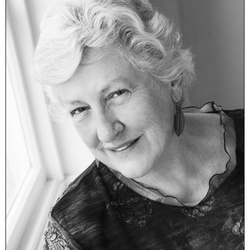
That's it: Women in architecture have been making history for some time.
Obviously, the last century has seen great shifts in attitudes to women and the roles we play out in life. Women of 1900 would be appalled by some of the characteristics of today's women, yet possibly thrilled by our choices and opportunities. If you're young you may think that's old stuff. All done now. If you're older you'll notice some things have changed during your lifetime as social norms are modified, even perhaps, not always as you'd wish. It's helpful to remember that great cities were not built in a day, and that parts may fall down between times. So ..... we redesign, we rebuild.
Women constructing a life in architecture or anything else today, are creating new behaviours and new models of how to be a woman in the world. The more science learns about humanity, the more it's evident there's not a lot that's innate in any human conduct. We are in the midst of evolution: evolution of human roles in society, evolution of the brain and the mind, and behaviour alongside, evolution of the human spirit, and I trust, evolution in democracy and human rights as well.
If you need a few pointers on imagining how things were in earlier times take a close look at some currently newsworthy countries across the globe. I'm grateful we women in NZ can get an education, own property, make our own choices and decisions, vote and even ..... go to architecture school. It's not really so long ago that western women couldn't do any of these either. The older I get the closer history seems. So I don't take human and civil rights for granted. We do need to pay attention.
The older I get the closer history seems. So I don't take human and civil rights for granted. We do need to pay attention.
The women's liberation movement of the late 1960s and 70s created a tremendous mood of enthusiasm and optimism for many women, myself included, opening eyes and minds to how much more was possible for women in life. Activists and writers analysed society and brought understanding and reasoning as to why change was desirable. No longer constrained by biology and the homely gender role, so the story went, women could do anything! Since then, women have entered architecture schools in generous numbers, disproving old nonsense notions about their brains and abilities and showing what's potentially possible.
The WIA group we set up in 1979 came out of the need for encouragement and support, nourishment even, for young women in architecture who didn't find enough of it anywhere else.
The WIA group we set up in 1979 came out of the need for encouragement and support, nourishment even, for young women in architecture who didn't find enough of it anywhere else. There were few role models for our adventurous new-style woman, and we had a strong sense of breaking exciting new ground in architecture, as in life. Male chauvinist attitudes were expressed freely face to face in some quarters, or seemed to be vibrating beneath the surface. Being shouted at by angry male architects about "what was going on", was no fun. There were numerous reports of quietly snide or patronising remarks from certain staff at the School, fellow students or colleagues. Others I hasten to say were absolutely admirable, thanks and more thanks, and their acceptance and support was really appreciated. What do they say though? Ten positive responses to every negative are required to maintain balance. Should we be grateful we weren't shot up in the street?
The first WIA meeting was held at my house, organised by myself, Amanda Reynolds and Fiona Christeller, with as many women architects and students as we could invite. Some twenty-five crammed into my living room, and the wider mailing list eventually numbered over 80. A monthly meeting gathered thereafter at different houses with lively and helpful discussion. Sometimes a guest speaker came with words of wisdom and experience, including architects Renate Block, Helen Tippet, Marilyn Reynolds, and Rosemary Eagles. The "Women's Institute of Architecture" name started as a satirical joke, and seemed to really upset certain persons. It stuck for several years before morphing into "Women in Architecture" (both WIA, you see). We even had a logo and a stamp. The intention was to function as a non-hierarchical co-operative group. Early on quite some energy was expended in trying to set up an incorporated society with numerous rules, as legally required, but this was eventually abandoned. Too complicated. Too formal. Youthful enthusiasm overwhelmed.
Mainly we discussed work, design and ideas and offered support to each other in the world of architecture. We wrote articles for publication and campaigning letters on assorted issues, compiled submissions to the NZIA and the Architecture School Review, organised speakers and conferences, spoke up for women in general, and tried to raise the profile of women in the profession. We contacted similar groups in the UK, USA and Australia. Other professions had groups of women similarly engaged. Details of our activities and views are in our articles from the AAA Journal, NZ Architect and assorted news clippings. I much appreciated the editor of NZ Architect at that time, Gerald Melling, for his encouragement.
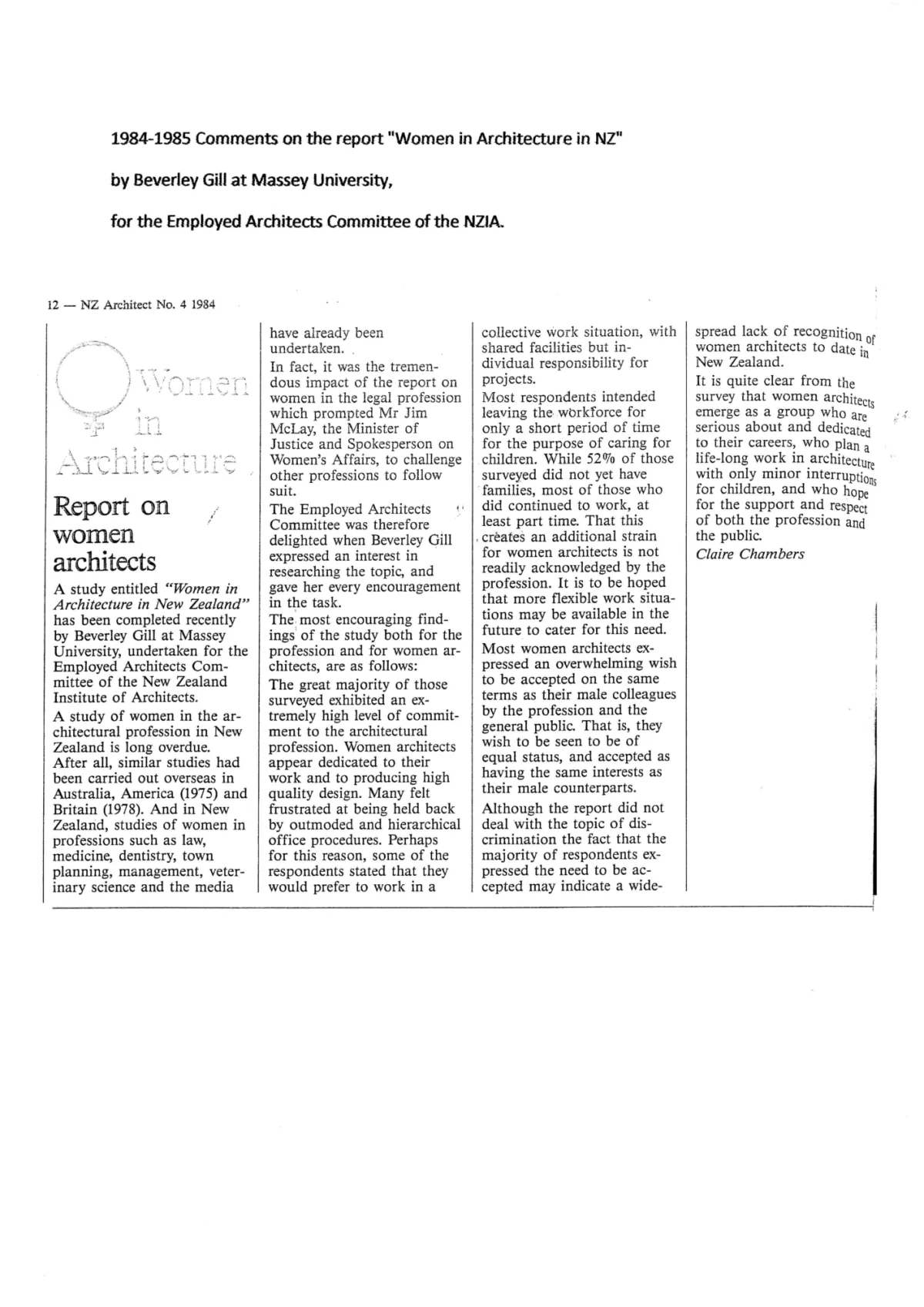

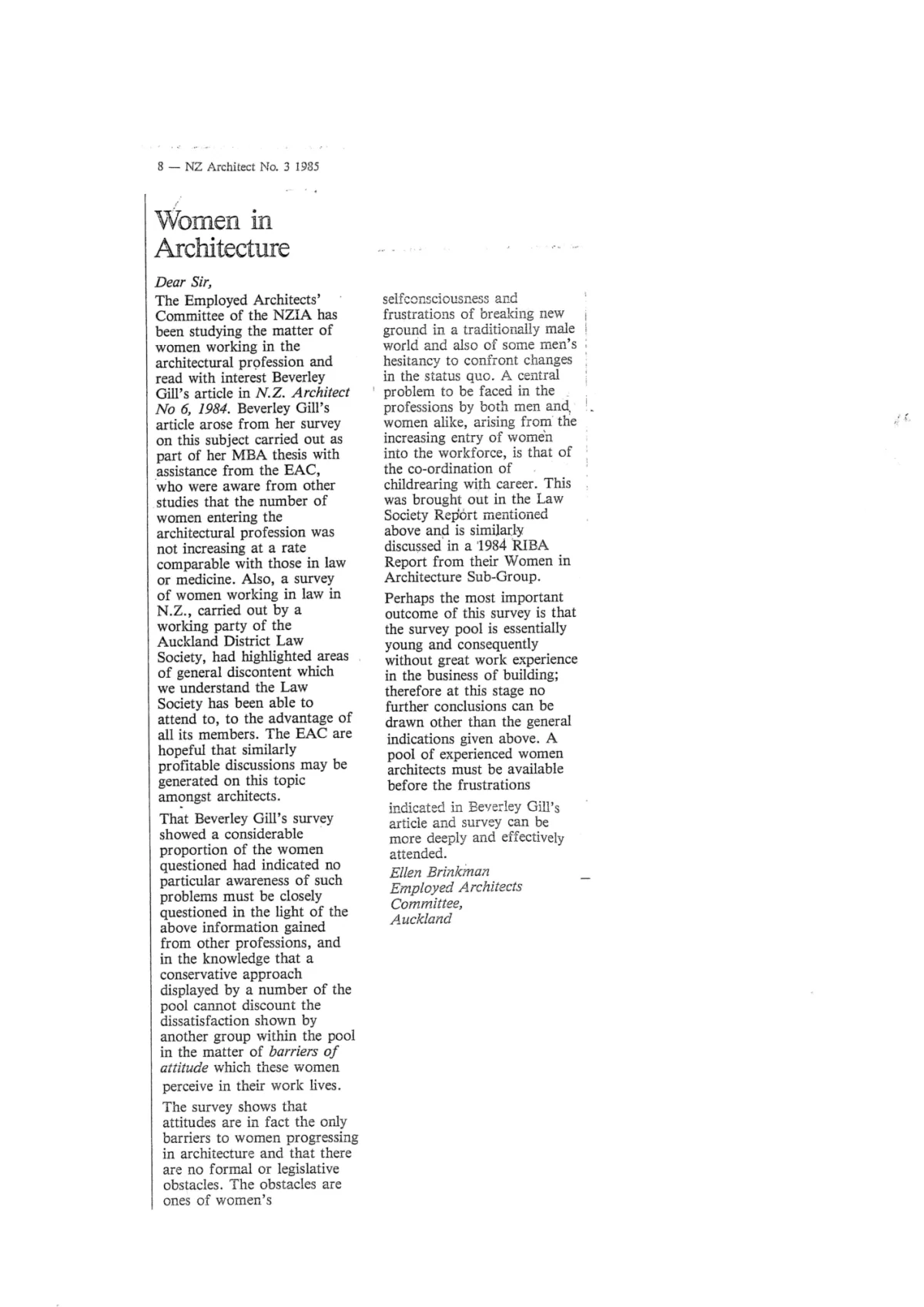
As with any group there were WIA stalwarts who lasted for years and others who passed briefly by or moved out of Auckland. Viewpoints and definitions of women's liberation or feminism varied from ardent to lukewarm, I suppose. Some I think were a little "undercover" since it seemed to invite hostility out there otherwise, and that was dangerous. Most of what might be thought radical then would be taken for granted now. Such is the flow of history as we undulate through life doing our best.
It was a wonderful and inspiring group of committed young women, many of whom have had interesting and creative careers, working hard at architecture along with family life, and making great contributions to NZ. For myself, like Douglas Adams, "I may not have gone where I intended to go, but I think I ended up where I intended to be."
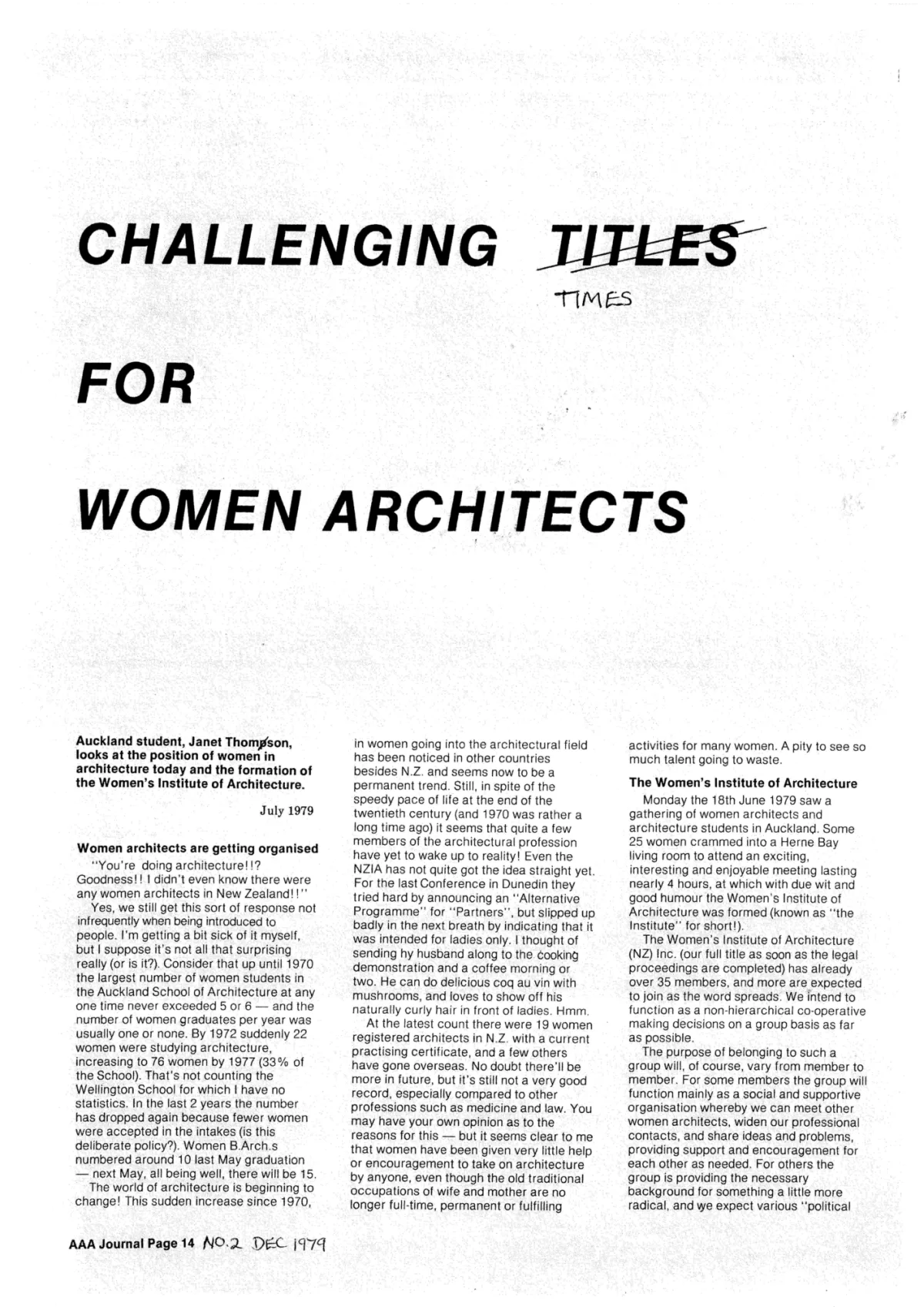
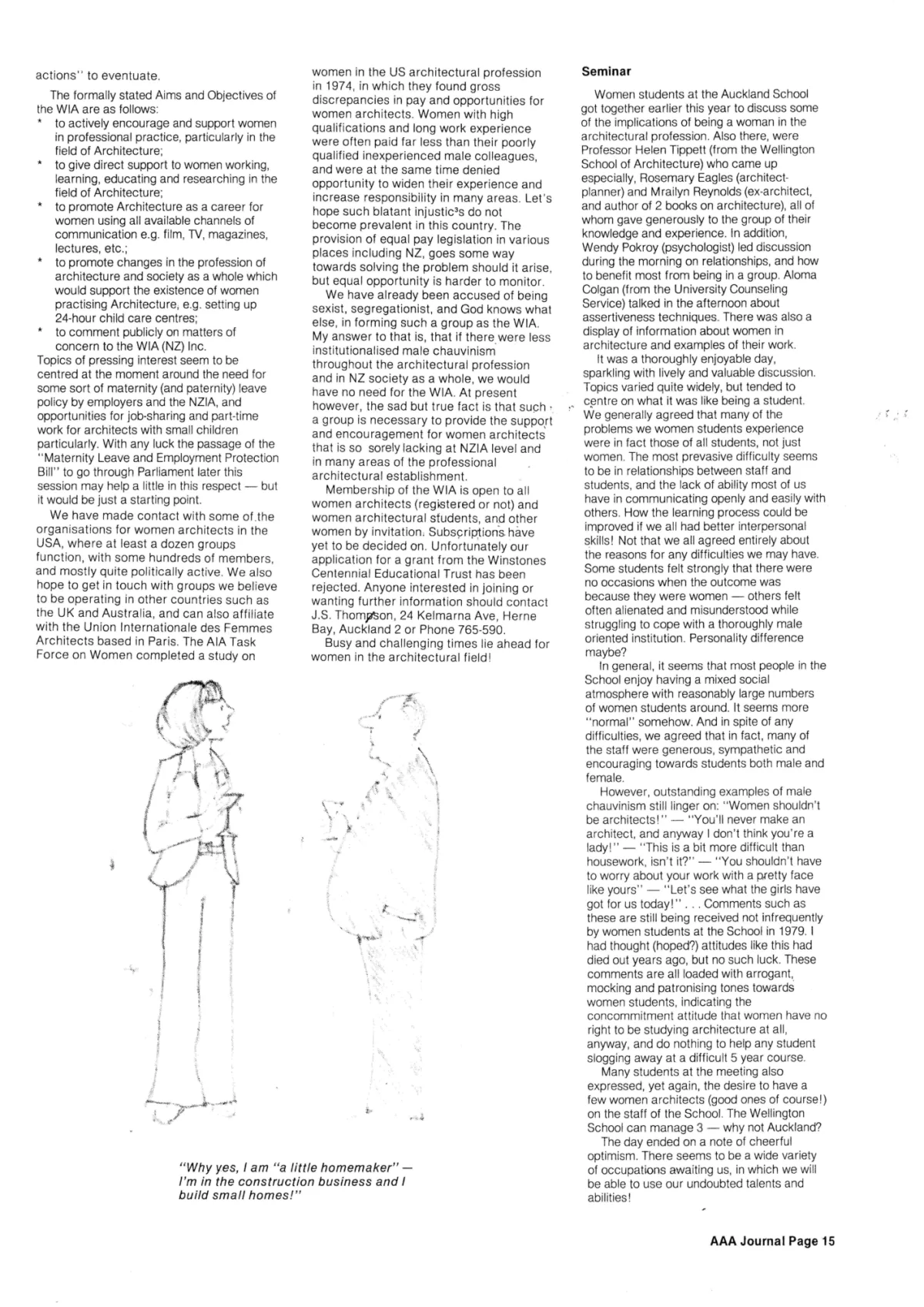
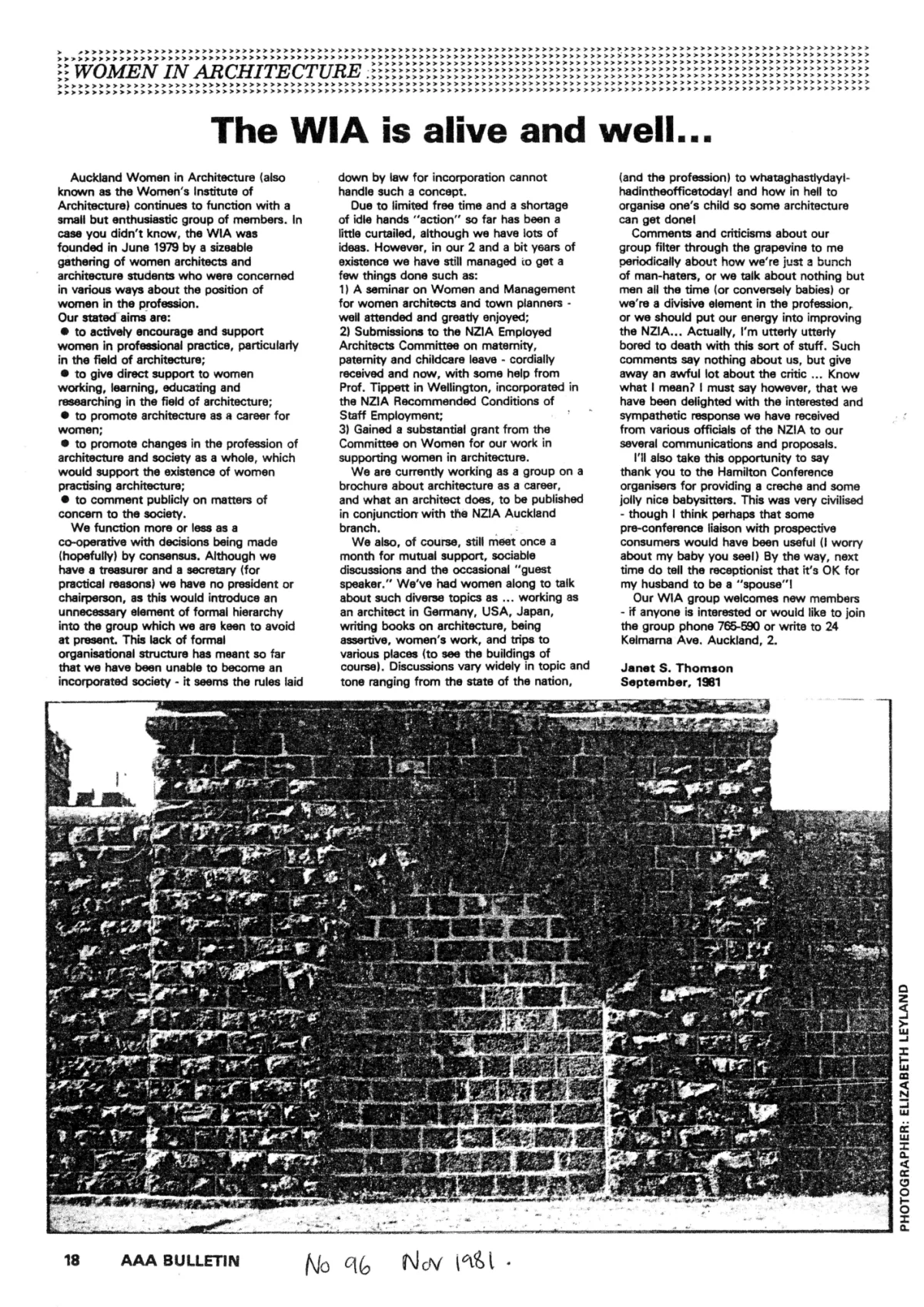
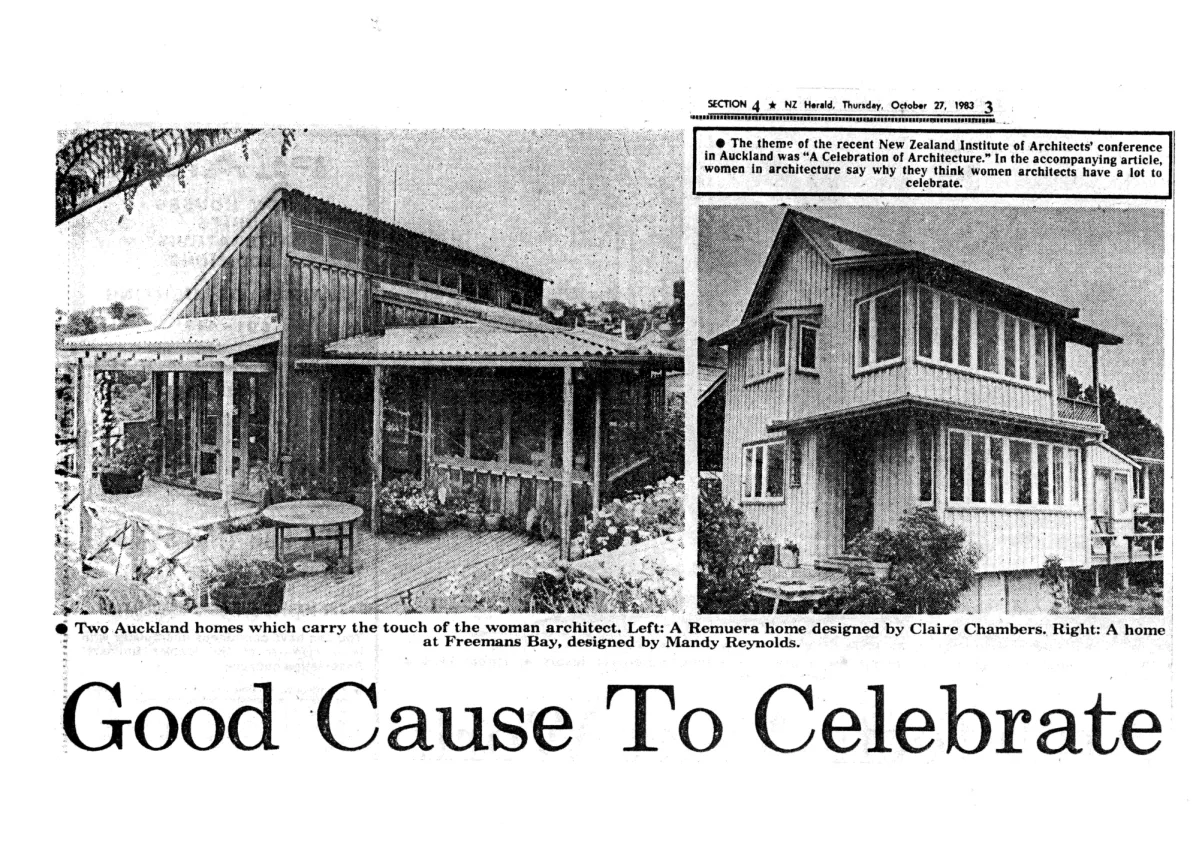

I have more dreams! ..... wider than just architecture. We know heaps more about human psychology now and there's more to learn yet. Not everyone likes or accepts change. I face the dilemma of wishing to have respect for others and their beliefs, while sometimes wanting to shake them around considerably. Doubtless the feeling is mutual. I don't see traditional male roles as necessarily desirable or fulfilling either, but that's not a problem I can fix.
Now there's concern that not enough women are becoming "registered" architects. Dreams need action to turn them into reality, and action needs skill, energy and resources. Dreams need practical solutions for everyday requirements, and new ways of operating. The radical idea that women could take on "work" outside the home has long since become obvious, but is fraught with complexity and numerous conflicting demands. While the right to equality is perceived as having been won in the west, it has turned into a pressure and an expectation, somehow distorted and reconstructed as "women have to do everything". Now it seems younger women need to fight for the right to spend time with family, from both a personal and economic stand point. Are we all working, and rushing, and wanting too much? Are we not fortunate to have the luxury of choice, while others struggle with unemployment? Just how important is "registration"?
My own view is that while women architects have moved into the profession with great energy and capability, the world of work as an economic and social system has barely changed for half a century.
My own view is that while women architects have moved into the profession with great energy and capability, the world of work as an economic and social system has barely changed for half a century. It suits a society of the past where men went out to work and women stayed at home doing everything else required for family. Make no mistake, home-work is also vital "Work", but is not directly paid for. Therefore in this system it barely even counts as work, because work by definition is something done outside home, that is paid for and therefore has value. While resourceful open-minded individuals may have sorted their own personal solutions, the system itself is not at all sorted. We have just fitted into it as best we can. Until this system is resolved on a national (or global) scale the problem of women architects perceived as lagging behind in so-called achievement, will continue.
While part-time work might suit some, it is unacceptable in many architecture firms, the very places you need to go to gain the right experience. Professional work carries responsibilities and makes extra demands on time and energy. Combining this with the reality of family life can be seriously difficult. It's not done to complain or need help. My long-held view that men also frequently miss out on family life because of the excessive demands of their jobs, still holds. On the other hand while the status and value of work at home is low, the contribution this makes to being a well rounded person, and thus incidentally being a better architect, is not widely appreciated. How is it all working out for you? And what will your children say in 30 years time?
Social change can seem terribly slow for some, too fast for others, or simply confusing. I remind myself that what's good for me, may not be good for you, and vice versa, and try to live well with that. There's a time lag that comes after the vision. There's also a time when you have to stand firm and say, "No, this should not be".
I recall the writer, Fay Weldon, mid 1980s, in her inspiring Auckland lecture saying, "Social change happens through numerous small acts of courage on a daily basis". Been there, done my bit of history making. What's yours?
Social change can seem terribly slow for some, too fast for others, or simply confusing.
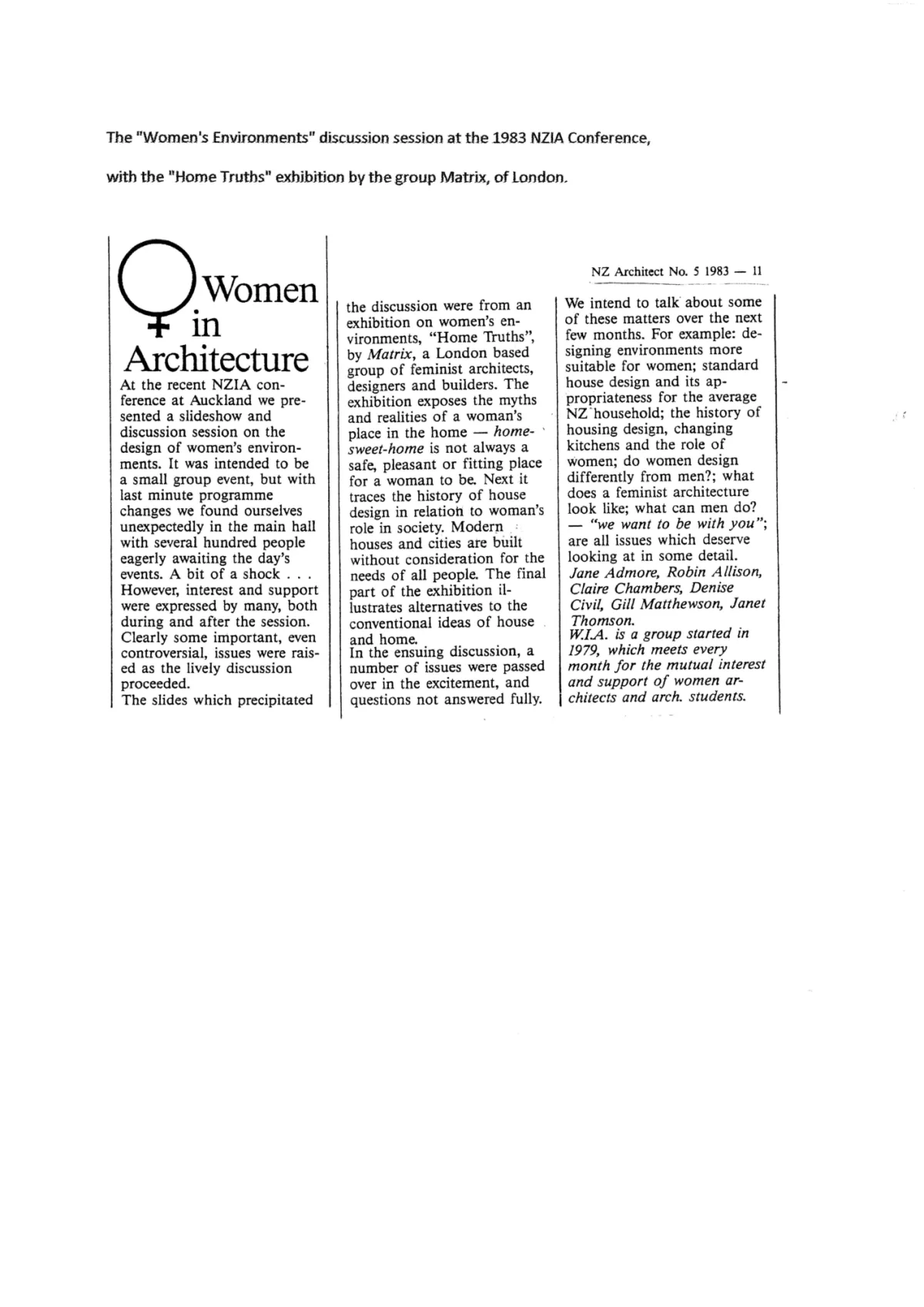
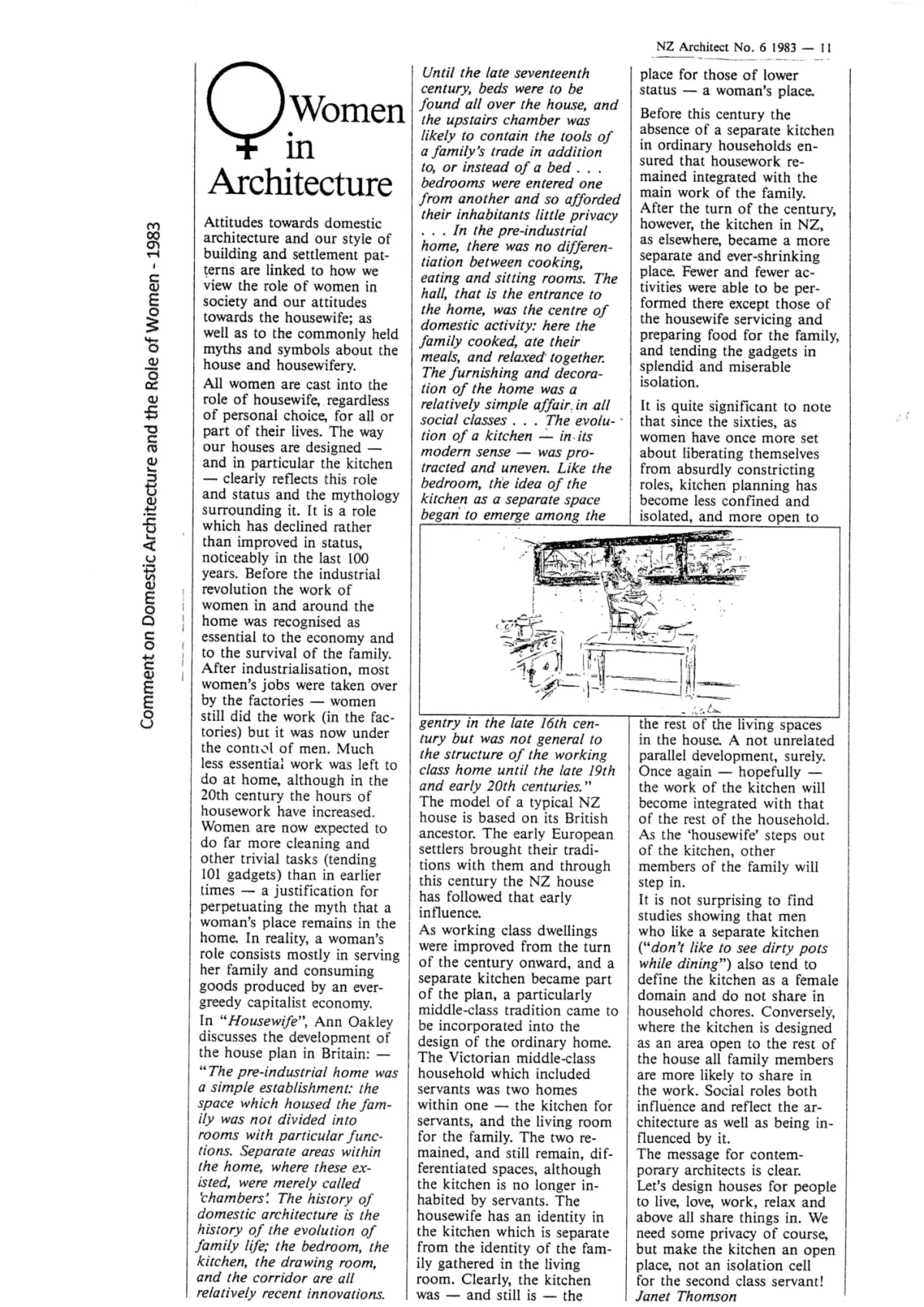
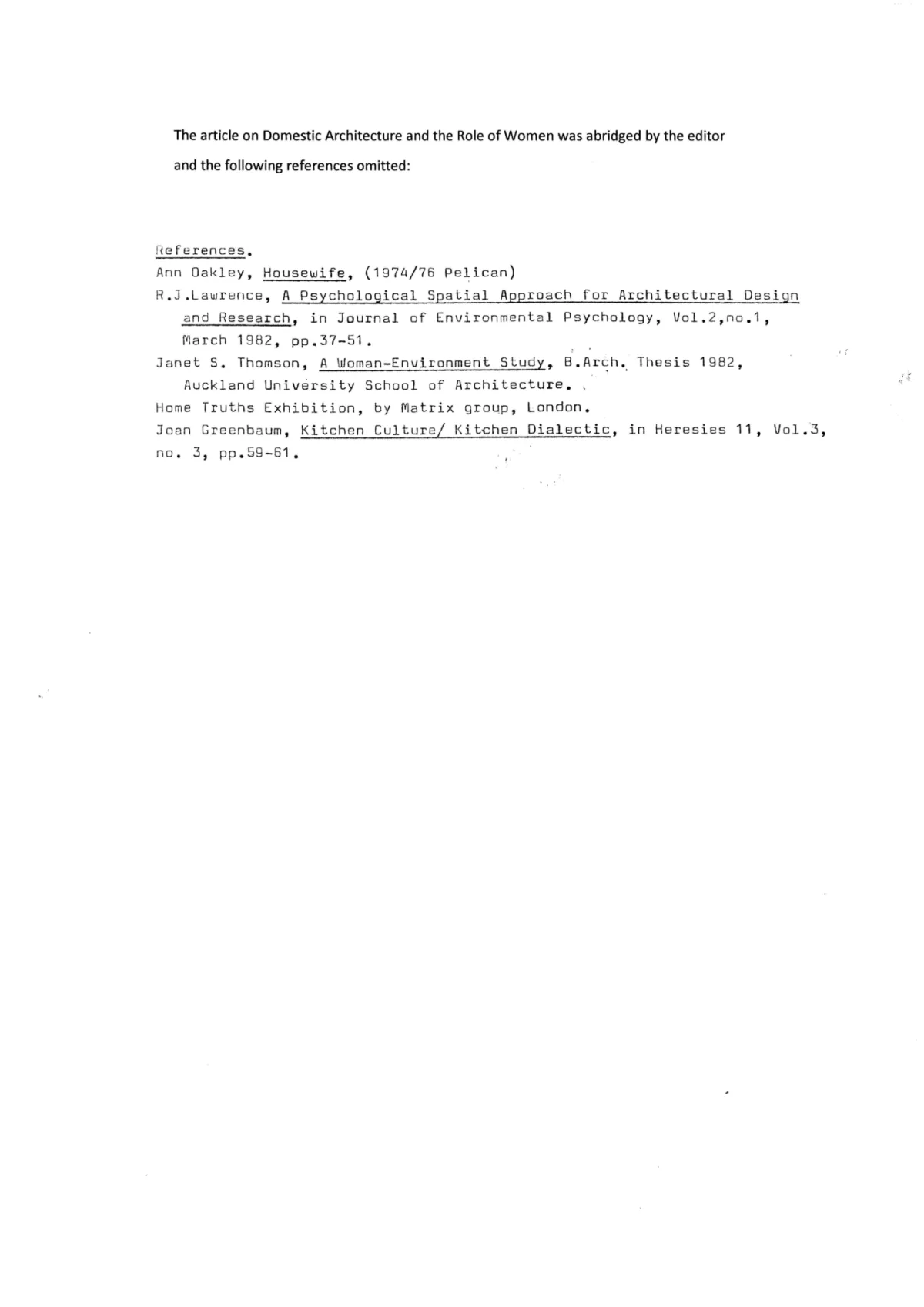
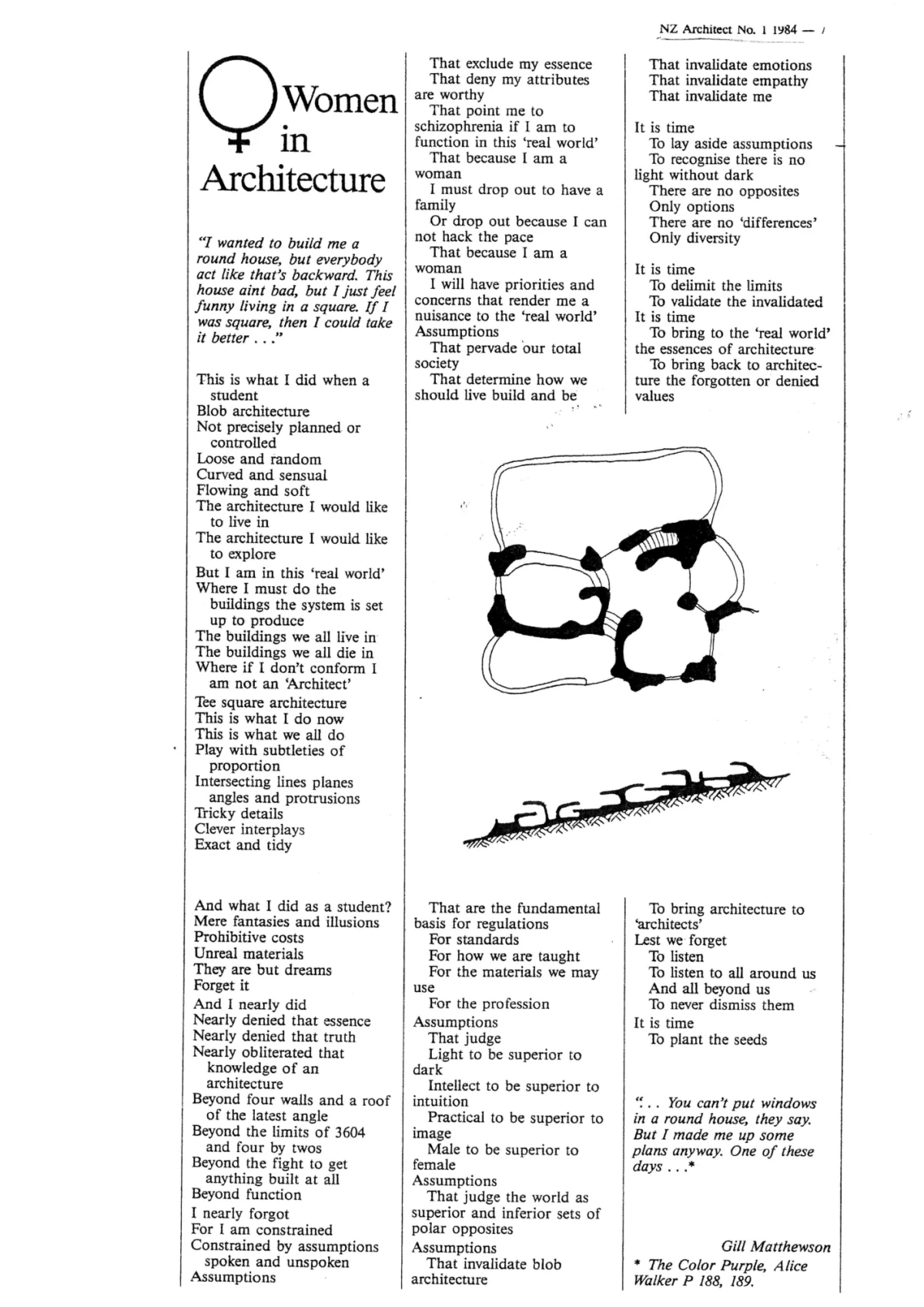
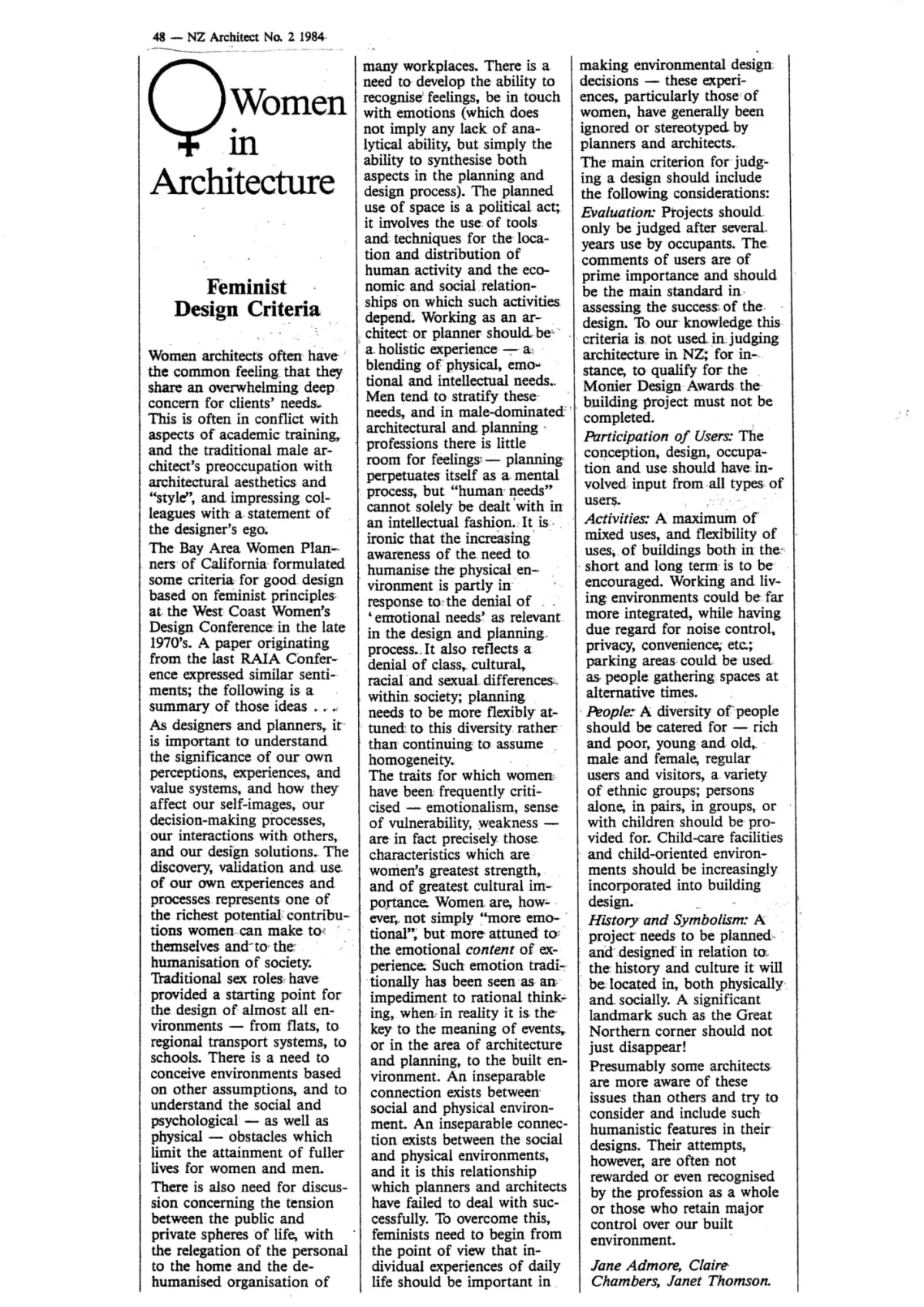
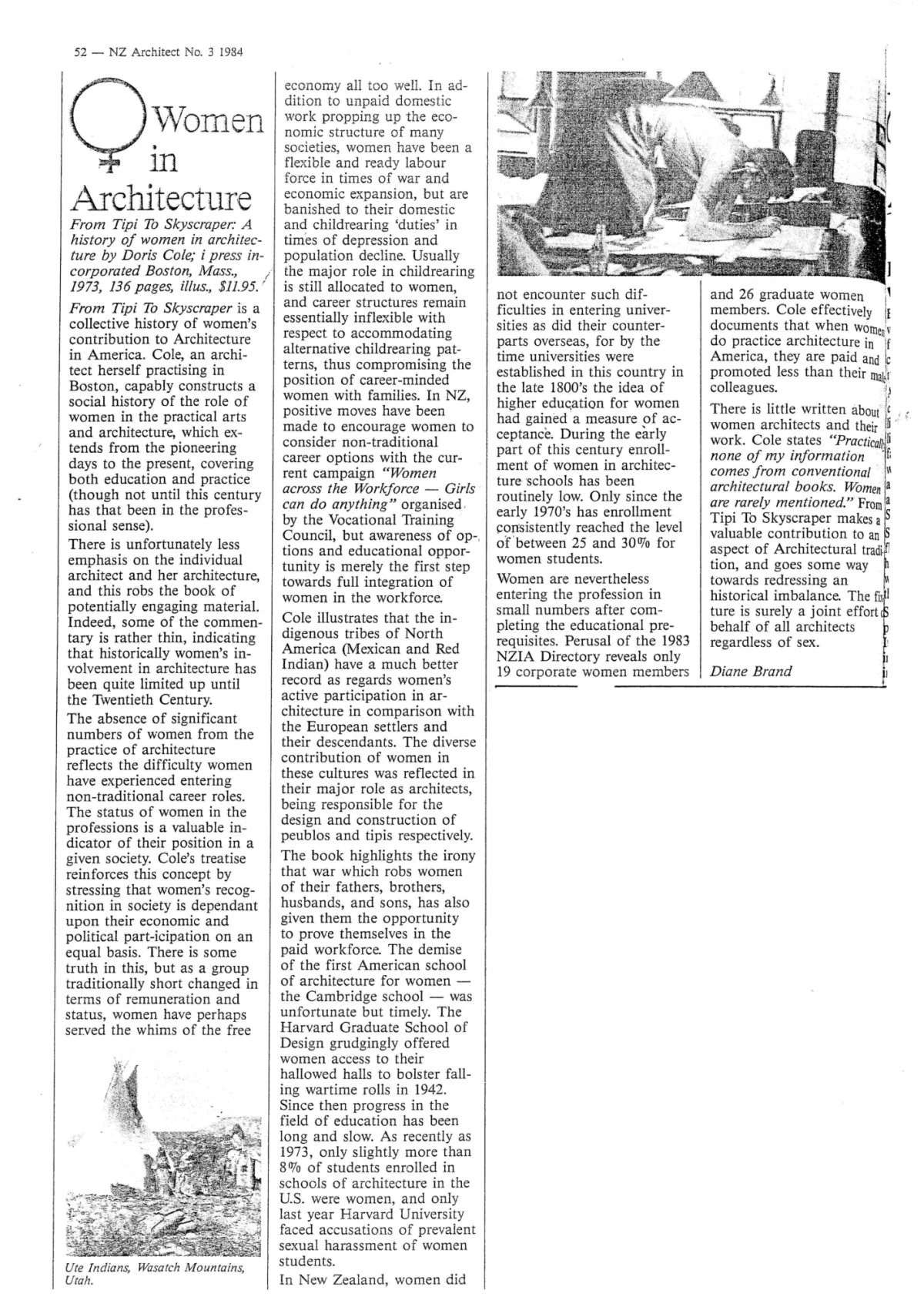

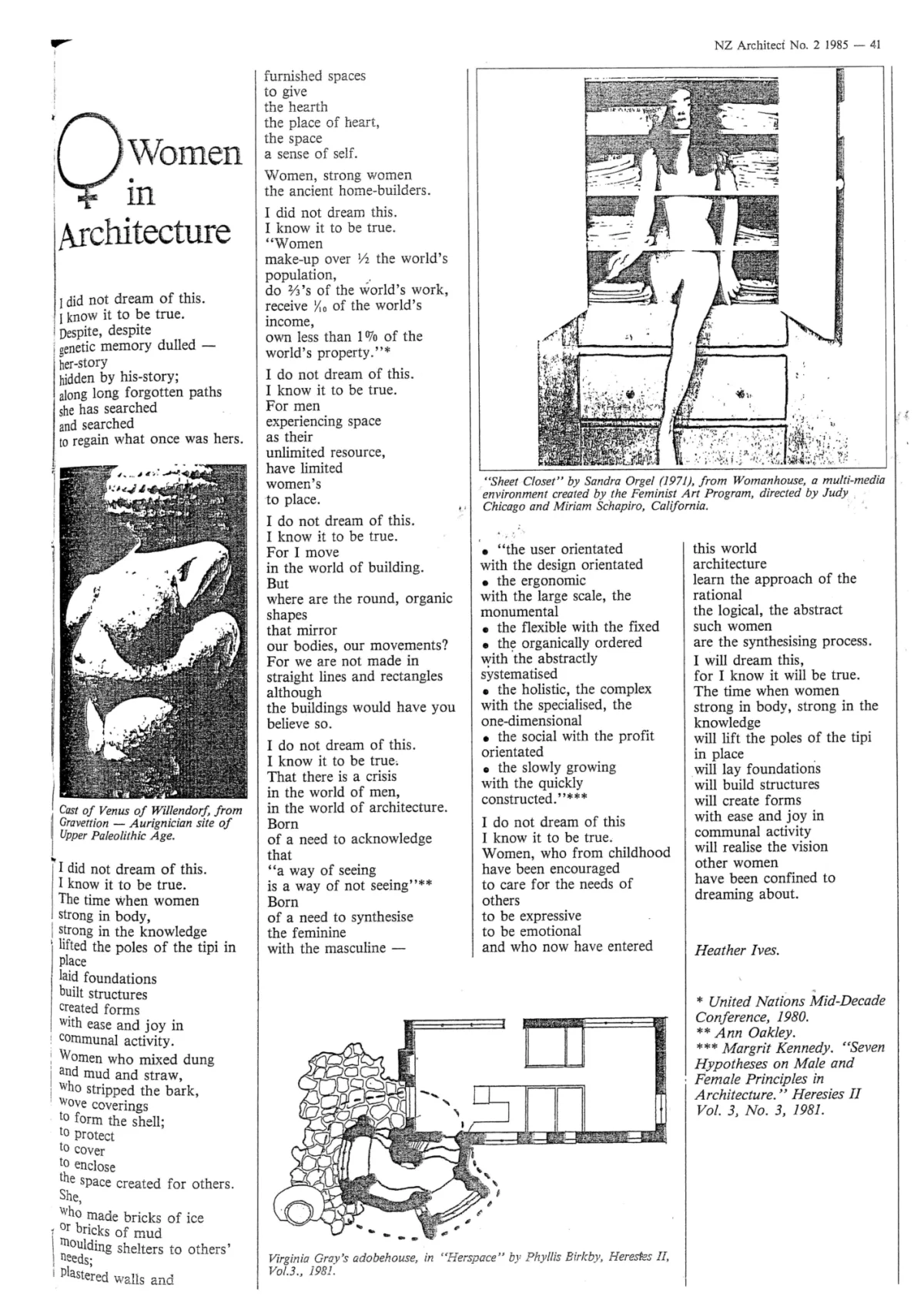

words by Janet Thomson












